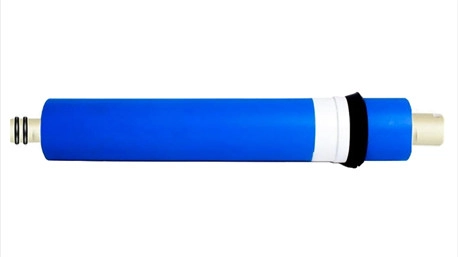How often should ro membrane be replaced?
Reverse osmosis (RO) water filtration systems are a popular option for producing clean, pure water. A key component in RO systems is the semipermeable membrane that removes contaminants. Over time, RO membrane performance declines and replacement is needed. In this article, I'll discuss the factors affecting membrane life and best practices for RO membrane replacement.
Overview of RO Membrane Function
RO systems use a multi-stage filtration process to remove particles, chemicals, microorganisms and other impurities from water. The RO membrane is the heart of the system. It is a thin film composite with microscopic pores that block the passage of dissolved salts and other contaminants.
As water passes through the RO membrane at high pressure, pure water molecules flow through while most impurities are retained and washed down the drain. Over time, contaminant buildup on the membrane surface leads to fouling and loss of effectiveness.

Typical RO Membrane Lifespan
The lifespan of an RO membrane depends on several variables. With optimal conditions, membrane life is typically 2-5 years for residential systems and 5-7 years for light commercial applications. However, poor water quality and maintenance can shorten membrane life significantly.
On average, plan to replace the RO membrane every 3 years in most home installations. High usage and challenging water conditions may dictate more frequent membrane replacement every 1-2 years.
Factors That Affect Membrane Longevity
There are several key factors that impact how long an RO membrane will last before needing replacement:
Water quality - High levels of sediment and certain chemicals in the feed water can foul membranes faster. Well water is particularly problematic.
Water usage - Heavy usage and high volume throughput wears membranes out quicker.
Maintenance - Lack of proper membrane cleaning and filter changes shortens membrane life.
Pressure - Operating under low or high pressure stresses the membrane.
Age - Membranes gradually lose performance as they age.
Water temperature also plays a role. Warmer water results in faster flow rates but can shorten run time. Colder water preserves the membrane but slows production.
Signs It's Time to Change the Membrane
The most reliable way to identify a worn out membrane is through reduced permeate flow. As the membrane becomes fouled and pipes begin to scale, the quantity of filtered water produced will drop.
Other signs it's time for a new membrane:
Lower rejection rates - More contaminants passing through the system.
High TDS - Elevated total dissolved solids in the product water.
pH shifts - Changes in permeate water pH.
Foul smells/tastes - Odors or tastes indicating contamination.
Failure to remineralize - Inability to add back beneficial minerals.
Leakage - Water passing along the membrane brine seal.
Old age - Performance decline after 3-5 years.
Conducting annual membrane autopsies and regular production flow testing lets you identify problems early.
Best Practices for RO Membrane Replacement
When it's time to replace the RO membrane, be sure to follow proper protocols:
Inspect all other filters and replace as needed
Flush valves, tubing and housings thoroughly
Use protective gloves and eye wear
Follow manufacturer's instructions
Disinfect system with chlorine after install
Confirm membrane orientation - marked arrows
Lubricate o-rings and brine seal
Re-pressurize and check for leaks
Flush new membrane per guidelines
Test permeate water quality
Replacing the pre-filters and flushing old mineral scale helps maximize the life and performance of the new membrane. Take time to fully sanitize the system as well.
Improve Membrane Longevity
You can optimize membrane life through proper system design, maintenance, and operating conditions:
Pretreatment - Multi-stage prefiltration prolongs membrane life.
Flushing - Routinely flush membranes with permeate.
DIY Cleaning - Occasional deep cleaning with DIY kits.
pH adjustment - Maintain feed water pH between 3-11.
Leak checks - Fix any leaks immediately to prevent excess water loss.
Usage - Avoid excessive flow rates and long stagnation periods.
Pressures - Maintain pressures between 50-125 psi.
Temperature - Ambient temperature around 77°F is ideal.
Scheduled replacement - Change membrane on schedule regardless of apparent condition.
Proper RO membrane care results in more consistent system performance and reliably pure water. Avoiding premature fouling and failure saves money in the long run too.
Final Thoughts
RO membrane replacement is an inevitable part of owning an RO system. With average residential use, plan on replacing membranes every 3 years. More challenging water or heavy use may dictate more frequent changes every 1-2 years.
Monitor your system's production quantities and permeate water quality. When you notice reduced performance, it's definitely time for a new membrane. With proper maintenance and operating conditions, you can optimize RO membrane lifespan. But no membrane lasts forever, so periodic replacement is essential.
References
Pure Water Products. "When Should I Change My RO Membrane?" https://www.purewaterproducts.com/articles/ro-membrane-change
Water Filter Data. "How Long Do Reverse Osmosis Membranes Last?" https://www.waterfilterdata.org/how-long-ro-membrane-lasts/
Mar Cor Purification. "Signs That Your RO Membrane Needs Replacing." https://www.mcpur.com/publications/memo/vol-5/iss-1/signs-that-your-ro-membrane-needs-replacing
WQA. "Reverse Osmosis Replacement Filters and Membranes." https://www.wqa.org/Portals/0/Technical/Technical%20Fact%20Sheets/EPU/EPU_ReverseOsmosisReplFilters.pdf
